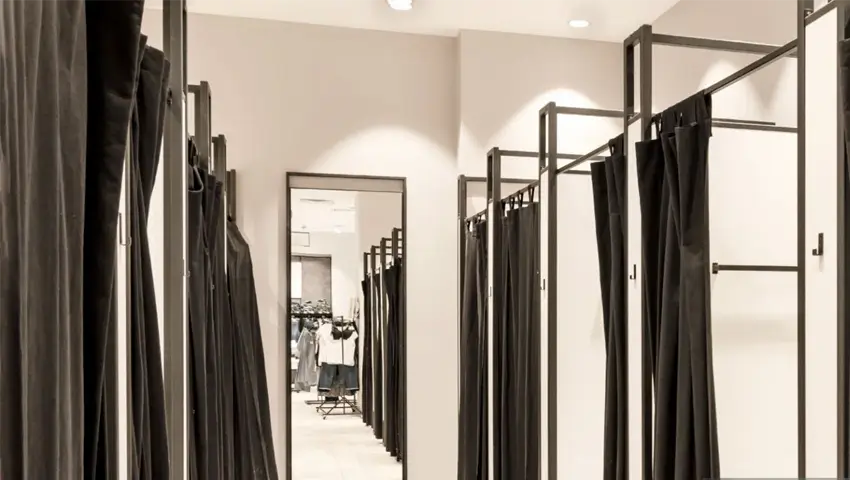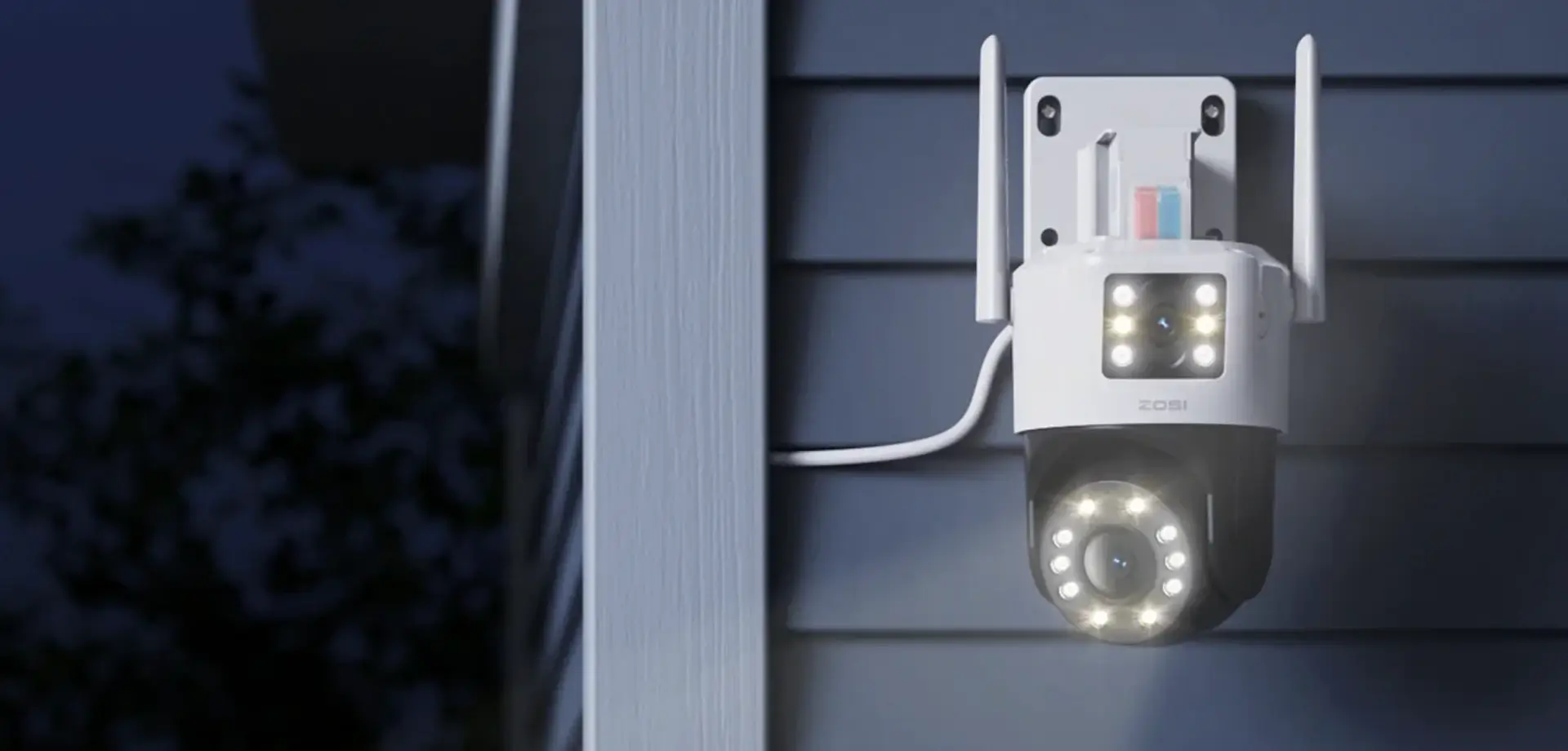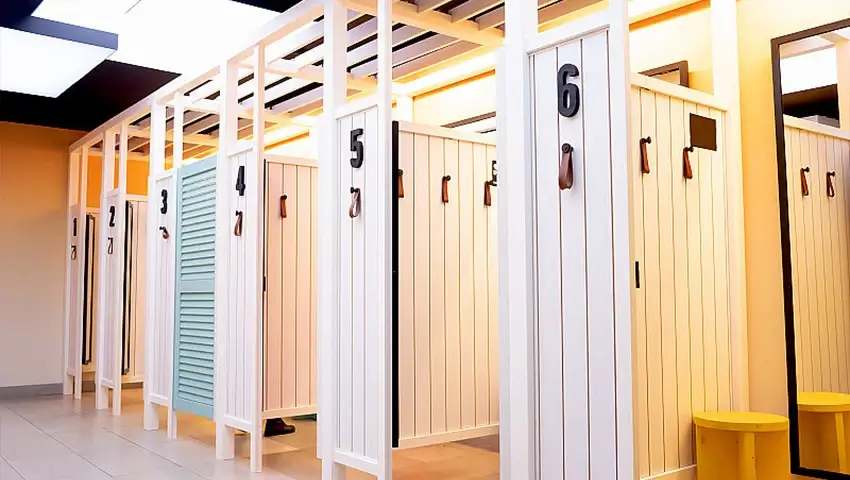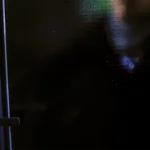The presence of cameras in fitting rooms poses a significant threat to individuals’ privacy and security. Being monitored or recorded without consent in such intimate spaces is deeply concerning.
In this article, we will delve into the potential dangers of fitting room cameras and provide practical strategies to avoid falling victim to their invasive presence. Whether in a retail store, gym, or any other public facility, the threat of a camera in a fitting room demands our attention and vigilance.
Contents
Definition of Fitting Room Camera
A fitting room camera is a surveillance device, often hidden or covert, installed in a dressing room to capture video or images of individuals fitting clothes. However, the use of these cameras without proper consent infringes upon personal privacy and security. Installing hidden cameras can lead to intrusive surveillance and potential misuse of recorded content, raising serious concerns about ethical conduct.
Illicit use of these cameras can have detrimental impacts on the well-being and rights of those utilizing such facilities.
Legal Insights of Installing Cameras in Fitting Rooms
The legality of fitting room cameras varies across the United States, with only 13 states explicitly prohibiting their use. Consequently, privacy and ethical surveillance practices become a significant concern, especially in retail and public facilities.
In particular, New York is among the 37 states that permit change room hidden cams for security purposes, subject to specific regulations. The Video Voyeurism Prevention Act allows video surveillance systems in dressing rooms for security monitoring, while New York’s privacy law prohibits secret video surveillance without consent.
However, in states where it is legal, clear notice must be provided to individuals, and the purpose of the cameras must be solely for security reasons as per specific laws.
Given the ethical implications of fitting room spy devices and hidden cams, businesses and authorities must prioritize transparency, consent, and protecting individuals’ privacy when implementing surveillance measures in fitting or dressing rooms. Customers and individuals have the right to expect privacy and confidentiality in such intimate spaces, highlighting the need to consider legal and ethical boundaries in surveillance practices carefully. By prioritizing transparency and ethical considerations, businesses and authorities can balance security and privacy concerns effectively.
Risks of Putting Hidden Cameras in Women’s Fitting Rooms
The use of hidden cameras in women’s fitting rooms poses severe risks to personal rights and emotional well-being. Covert surveillance devices not only violate privacy but also have far-reaching consequences on individuals’ lives, particularly for women, who are disproportionately affected by such intrusive acts.
- Placing a hidden camera in women’s fitting rooms constitutes a blatant violation of privacy. It undermines the fundamental right to privacy, creating an environment of constant surveillance and vulnerability. Women should feel secure and unobserved in private areas such as fitting rooms, and hidden cameras breach this sense of safety and confidentiality.
- Furthermore, installing a hidden camera in women’s fitting rooms constitutes a severe criminal offense. In many jurisdictions, such unauthorized surveillance is illegal and punishable by law due to its intrusive and unethical nature. Perpetrators can face severe legal repercussions and tarnish their reputation through involvement in such illicit activities.
- The discovery of being recorded in a vulnerable state can have profound psychological effects on victims. Women who realize they have been subjected to hidden camera surveillance may experience feelings of violation, anxiety, and emotional distress. The knowledge that intimate moments were illicitly captured can lead to long-term psychological trauma, eroding trust and confidence.
- The repercussions extend beyond legal consequences for businesses or individuals involved in perpetrating the placement of hidden cameras. The discovery of such invasive surveillance can result in a significant loss of reputation and trust, damaging relationships and potential economic repercussions.
How to Detect Hidden Fitting Room Camera
It can be distressing to discover a hidden camera in a fitting room, but there are practical measures that individuals can take to identify covert surveillance devices and protect their privacy. Here are some steps you can take to detect hidden fitting room cameras:
- Look for Unusual Objects: Carefully inspect the fitting room surroundings for unusual or out-of-place objects. Hidden cameras are often disguised as everyday items such as smoke detectors, air purifiers, clothing hooks, etc. Being attentive to any unfamiliar objects can aid in uncovering concealed surveillance devices.
- Check Blinking Lights: Hidden cameras may feature small indicator lights that blink during operation. These lights are designed to be inconspicuous, but a keen eye can detect them. Take a moment to observe the fitting room for any unusual blinking lights, particularly in areas where cameras could be concealed.
- Use a Flashlight: Utilizing a flashlight can help detect hidden cameras. Shine the light around the room, paying close attention to areas where cameras could be hidden, such as vents, gaps in ceiling tiles, or behind decorative items. The reflective surface of a camera lens may become visible under direct light.
- Check Mirrors: Mirrors can conceal hidden cameras, especially when they are two-way or partially obscured. Examine the mirror closely for irregularities, such as a visible camera lens behind the reflective surface. Tapping on the mirror can also reveal any hollowness that could indicate the presence of a concealed camera.
- Scan for WiFi Signal: Hidden cameras with wireless capabilities emit WiFi signals. A signal scanner or RF detector can help scan for these signals within the fitting room. By conducting a thorough scan, individuals can identify any abnormal wireless transmissions that could indicate the presence of a hidden camera.
Alternatives to Hidden Camera in Fitting Room
Several transparent and appropriate methods exist to monitor fitting rooms, ensuring safety and security while respecting privacy and ethical standards. Here are some alternatives to hidden cameras in fitting rooms:
- Visible Security Cameras: Installing visible security cameras in fitting rooms serves as a deterrent to illicit activities while providing a sense of security for patrons. Clear signage should accompany these cameras to notify individuals of their presence.
- Staff Presence: Having dedicated staff members present near the fitting rooms can act as a proactive measure to maintain order and address any concerns promptly. Their presence also instills a sense of reassurance among patrons.
- Security Guard: Employing a trained security guard positioned near the fitting rooms can offer a vigilant and responsive approach to maintaining a secure environment. The guards could monitor the fitting room entrance/exit and intervene immediately if any suspicious activity is observed in or around the fitting room.
- Regular Inspection: Conducting routine and scheduled inspections of the fitting rooms ensures they remain in proper condition and free from any unauthorized devices or obstructions. Inspections can be performed by qualified personnel or third-party inspectors to identify any security vulnerabilities or areas where improvements are required.
Best Security Camera to Monitor Fitting Room Outside
If you’re looking for a powerful solution to monitor fitting rooms from the outside, the Zosi 1NC-298 is an excellent choice. Equipped with dual lenses, this security camera provides comprehensive coverage of the fitting room area, simultaneously capturing high-quality visuals from multiple angles, ensuring vigilant monitoring and surveillance.
With an impressive 8MP capability, this device delivers sharp and detailed imagery, enabling precise identification of individuals and activities around the fitting room vicinity. This high resolution contributes to heightened security monitoring and incident investigation.
8MP PTZ Wifi Outdoor Camera With Dual Lens - 1NC-298
- 4MP+4MP Dual Lens
- Dual Lens Achieves Ultra-wide Field Of View
- AI Person Detection and Auto Tracking
- Starlight Color Night Vision
- Smart Motion Alerts Push
- Two-way Audio & Customize Voice Alerts
- SD Card Storage & Cloud Storage
Get more details from the fitting room security camera reviews here.
Below is a video shared by a user of 1NC-298.
FAQs
1. How can I check if there is a camera in the fitting room?
To check for cameras, carefully inspect the surroundings for unusual objects, blinking lights, and WiFi signals. Shine a flashlight around the room, paying attention to areas where cameras could be hidden, such as vents, gaps in ceiling tiles, or behind decorative items. Lastly, check mirrors to identify any irregularities that could indicate the presence of a hidden camera.
2. What states allow cameras in dressing rooms?
Only 13 states explicitly prohibit dressing room cameras, including Alabama, Arkansas, California, Delaware, Georgia, Hawaii, Kansas, Maine, Michigan, Minnesota, New Hampshire, South Dakota, and Utah.
3. Is it possible for a cell phone to detect a hidden camera?
While cell phones cannot directly detect hidden cameras, signal scanners or RF detectors can be used to scan for abnormal WiFi signals. You can also use the flashlight on your cell phone to identify any abnormal infrared light inside a room that may indicate the presence of a hidden camera.
Conclusion
The presence of fitting room cameras, including hidden ones, poses significant risks to individual privacy and security, infringing upon their rights and well-being. Such intrusive surveillance undermines the safety and confidentiality expected in these intimate spaces.
However, proactive measures like careful inspection and transparent monitoring practices can be taken to detect and prevent the unauthorized use of hidden cameras in women’s fitting rooms.






